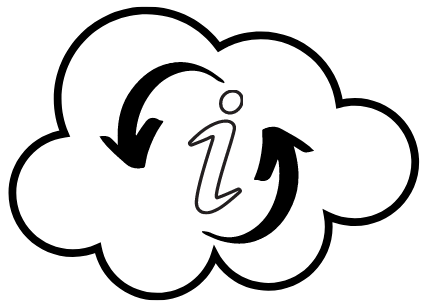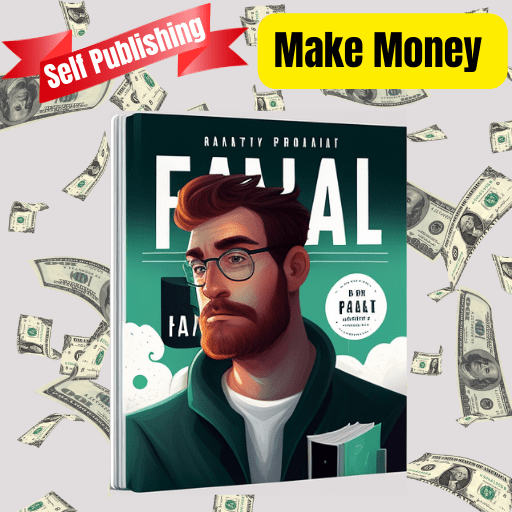Self-publishing has become an increasingly popular option for aspiring authors who want to share their work with the world. While traditional publishing routes can be difficult to navigate and often result in lower royalties for the author, self-publishing offers creative control, higher profits, and a faster time to market. In this post, we’ll explore the various aspects of self-publishing and provide tips for making money as a self-published author. Whether you’re a first-time author or an experienced writer, this guide will help you understand the process and potential rewards of self-publishing.
Table of Contents
Why Self-Publishing
There are several advantages to self-publishing that make it an attractive option for many authors:
Creative Control
Self-publishing allows authors to retain complete creative control over their work, including the content, cover design, and marketing strategies. This can be especially appealing to authors who are passionate about their vision and want to ensure their work is presented in a way that aligns with their artistic vision.
Higher Royalties
One of the most significant benefits of self-publishing is the higher royalties. In traditional publishing, authors typically receive a royalty rate of around 10-15% of the book’s sale price. In contrast, self-published authors can earn up to 70% of the sale price, depending on the platform and pricing model they choose.
Faster Time to Market
Traditional publishing can be a long and frustrating process, often taking months or even years to get a book on the shelves. Self-publishing, on the other hand, allows authors to publish their work as soon as it’s ready, providing a faster time to market and the potential for quick profits.
Types of Self-Publishing
There are several types of self-publishing, each with its own advantages and drawbacks. Here are three of the most common types of self-publishing:
Traditional Self-Publishing
This involves the author taking full responsibility for all aspects of the publishing process, from writing and editing to cover design and marketing. The author owns the rights to the book and is responsible for all costs, but also retains full creative control and all profits.
Hybrid Publishing
This is a combination of traditional self-publishing and traditional publishing. In this model, the author pays a fee to a publisher in exchange for editorial, design, and marketing services. The author retains ownership of the book and receives higher royalties than with traditional publishing, but may have less creative control.
Print-on-Demand Services
This involves using a third-party service to print and distribute the book. The author retains ownership and creative control, but pays for each copy of the book that is printed and may have to handle marketing and distribution themselves.
Each of these self-publishing options has its own benefits and drawbacks, so it’s important to carefully consider which option is best for you and your book. Factors to consider include your budget, the amount of control you want to have over the publishing process, and the level of support you need. By weighing the pros and cons of each option, you can choose the self-publishing route that is best for you and your book.
Writing and Editing
One of the most critical factors in the success of a self-published book is the quality of the writing. While self-publishing offers authors creative control and the ability to publish quickly, it’s essential to ensure that your book is of high quality before releasing it to the public. Here are some tips for writing and editing your self-published book:
Write a high-quality book
This may seem obvious, but it’s crucial to write a book that is well-written, engaging, and appeals to your target audience. Take the time to research and plan your book carefully, and ensure that it meets the standards of your genre or niche.
Read more
How to Start a Successful Online Business
Hire professional editing services
Once you have written your book, it’s essential to have it professionally edited. Even the best writers need editing, and it’s important to have someone who can provide an objective assessment of your work. Professional editors can help you identify and fix grammar and spelling errors, improve sentence structure, and ensure that your book is clear and concise.
Get feedback from beta readers
Beta readers can provide valuable feedback on your book before it is published. These are readers who are part of your target audience and can offer insights on whether your book is engaging, well-written, and effective.
By taking the time to write a high-quality book and getting professional editing services and feedback from beta readers, you can improve your chances of success as a self-published author. While it may take more time and effort, investing in the quality of your book can pay off in the long run with higher book sales and a better reputation as an author.
Cover Design and Formatting
While the content of your book is crucial, it’s essential not to overlook the importance of a professional book cover and interior formatting. Here’s why:
A professional book cover can attract readers
Your book cover is the first thing that potential readers will see, and it’s important to make a good first impression. A professionally designed book cover can help your book stand out from the crowd and entice readers to learn more about your book.
Good interior formatting can enhance readability
The interior formatting of your book can affect its readability. A well-formatted book can make it easier for readers to navigate your book, read it comfortably, and enjoy the reading experience. Proper formatting also gives your book a professional look and can help readers take it more seriously.
Professional design can boost sales
A professionally designed book cover and interior formatting can increase your book’s perceived value and boost sales. A well-designed book cover and interior formatting can make your book look more appealing and professional, which can help convince readers to buy your book.
While it’s possible to design your book cover and interior formatting yourself, it’s often best to hire a professional designer. Professional book designers have the skills and expertise to create designs that are not only visually appealing but also effective in attracting readers and enhancing the reading experience. By investing in professional cover design and formatting, you can improve the chances of success for your self-published book.
Marketing and Promotion
Once you’ve written and published your book, the next step is to market and promote it. Here are some marketing and promotional strategies that can help you increase book sales:
Utilize social media
Social media platforms like Twitter, Instagram, and Facebook are great for promoting your book to potential readers. You can use these platforms to engage with your readers, share book updates, and run promotions.
Use email marketing
Email marketing is another effective way to promote your book. By building an email list of interested readers, you can keep them updated about your book releases, promotions, and events.
Leverage book reviews
Positive book reviews can help increase your book’s visibility and credibility. You can reach out to book bloggers, book clubs, and reviewers to request book reviews. Ensure that you include a link to your book and a synopsis when reaching out to them.
Participate in book signings and events
Attending book signings and events can provide opportunities to connect with readers and promote your book. You can also leverage these events to network with other authors and industry professionals.
Offer promotions and discounts
Offering promotions and discounts can help you generate buzz for your book and encourage readers to purchase it. Some examples of promotions include offering a free sample chapter or providing a discount code for a limited time.
By utilizing these marketing and promotional strategies, you can increase book sales and build a loyal following of readers. Remember that marketing your book is an ongoing process, and it may take time to see results. However, with persistence and dedication, you can successfully promote your self-published book and grow your readership.
Selling Platforms
One of the advantages of self-publishing is the ability to sell your book on a variety of online platforms. Here are some of the most popular platforms for self-published authors:
Amazon
Amazon is the largest online retailer and provides self-published authors with access to a massive customer base. With Kindle Direct Publishing (KDP), authors can upload their books to Amazon’s website and start selling within a few hours. Authors can also enroll in KDP Select, which provides additional marketing and promotional opportunities.
Barnes & Noble
Barnes & Noble’s self-publishing platform, Nook Press, allows authors to upload and sell their ebooks and print books. The platform also provides marketing and promotional tools, such as the ability to offer free samples and reviews.
Kobo
Kobo is a popular e-reader and ebook retailer, and their self-publishing platform, Kobo Writing Life, provides authors with an opportunity to upload and sell their ebooks on their website.
Apple Books
Apple Books is a popular platform for ebooks, and authors can sell their books on the platform by using the iBooks Author tool or uploading their book through an aggregator service.
IngramSpark
IngramSpark is a self-publishing platform that allows authors to publish and distribute their books in both print and ebook formats. The platform provides distribution to over 40,000 retailers, including Amazon, Barnes & Noble, and independent bookstores.
When deciding which selling platform to use, it’s important to consider the audience you want to reach, the fees and royalties offered, and the marketing and promotional tools provided. Many authors choose to sell their books on multiple platforms to maximize their reach and increase their chances of success.
Setting Prices and Royalties
Setting the right price for your book is an important part of self-publishing. You want to make sure you’re earning a profit while also attracting readers. Here are some tips for setting prices and royalties for your self-published book:
Research
Look at the prices of other books in your genre and compare their prices to the length and quality of your book. This can help you determine a competitive price for your book.
Production costs
Consider the cost of production, including editing, cover design, and formatting. This can help you determine the minimum price you need to set to earn a profit.
Royalties
Different selling platforms offer different royalty rates, so it’s important to compare and choose the platform that offers the best rates for you. For example, Amazon KDP offers royalty rates of up to 70% for ebooks, while other platforms may offer lower rates.
Read more
5 Things to Consider Before Investing in Cryptocurrency
Pricing strategies
You can experiment with different pricing strategies, such as offering discounts or running promotions to attract readers.
To calculate your potential profits, you need to consider your book’s production costs, selling price, and royalties. Here’s a basic formula to help you calculate your profits:
Net Profit = (Selling Price – Production Costs) x Royalty Rate
For example, if you sell an ebook for $9.99, with production costs of $2.50, and a royalty rate of 70%, your net profit would be:
Net Profit = ($9.99 – $2.50) x 0.70 = $5.24
It’s important to remember that self-publishing is a business, and you need to make sure you’re earning a profit to continue producing high-quality books. By researching prices, production costs, and royalties, you can set a fair and competitive price for your book that will attract readers and earn you a profit.
Building an Author Platform
Building an author platform is an essential part of self-publishing. Your author platform is how you establish a brand and connect with readers. Here are some tips for building an author platform:
Start with a website
Your website is the central hub of your author platform. It’s where readers can learn about you, your books, and your brand. Make sure your website is visually appealing and easy to navigate.
Create a mailing list
Email marketing is a powerful tool for connecting with readers. Offer readers a chance to sign up for your mailing list on your website or social media accounts.
Be active on social media
Social media is a great way to connect with readers and build your brand. Choose one or two platforms where your target audience is most active, and be consistent with your posting.
Guest blog
Writing guest posts for other blogs is a great way to reach new readers and build your brand. Look for blogs in your genre and pitch them on a relevant topic.
Offer free content
Offering free content, such as a sample chapter or short story, is a great way to attract new readers and build your brand.
Collaborate with other authors
Collaborating with other authors can help you reach new readers and build your brand. Look for opportunities to co-write a book or participate in a joint promotion.
Establishing a brand as a self-published author is important because it helps you stand out in a crowded market. Your brand should reflect your values and the type of writing you produce. Consistency is key when it comes to building a brand, so make sure your website, social media accounts, and other marketing materials all have a cohesive look and feel.
By building an author platform and establishing a brand, you can connect with readers and build a loyal fan base. It takes time and effort, but the result is a sustainable and successful self-publishing career.
Tips for Success
Here are some additional tips for success in self-publishing:
Stay current with industry trends
The publishing industry is constantly evolving, and it’s important to stay up-to-date with the latest trends in order to make informed decisions. Subscribe to industry publications, follow industry influencers and blogs, and attend conferences and workshops to stay current.
Collaborate with other authors
Building relationships with other authors can be beneficial in many ways, including cross-promotion, critique and feedback, and knowledge-sharing. Join writing groups and attend events in your local community to meet other authors and establish connections.
Use data and analytics to inform decisions
Many online selling platforms and marketing tools provide data and analytics on book sales, reader demographics, and more. Use this information to inform decisions on pricing, marketing, and promotion.
Read more
Cryptocurrency Investment Strategies for Maximizing Returns
Be open to feedback and continuous improvement
Being open to feedback and willing to make changes to your writing, marketing, and promotional strategies can lead to continuous improvement and growth. Seek out feedback from readers, other authors, and industry professionals and use it to make informed decisions.
Be patient and persistent
Self-publishing is not a get-rich-quick scheme, and success may take time and persistence. Keep writing, keep improving, and keep marketing and promoting your work, and success will come with time.
By following these tips, you can increase your chances of success in the self-publishing industry and achieve your goals as an independent author.
Conclusion
self-publishing can be a lucrative and fulfilling way to share your writing with the world. By taking advantage of the creative control, higher royalties, and faster time to market that self-publishing offers, you can establish yourself as an author and potentially earn a significant income. Remember to write a high-quality book and hire professional editing services to ensure that your work is polished and ready to be published. Additionally, invest in professional cover design and formatting, and take advantage of marketing and promotional strategies to increase book sales. Finally, don’t forget to stay current with industry trends and collaborate with other authors to establish a strong brand and build a supportive community. With these tips, you can start your self-publishing journey and achieve success as an independent author. If you have any queries regarding this please comment through the box. Don’t forget to share it with your friends & family.
Please click here to see the new post. Thank you!!!




